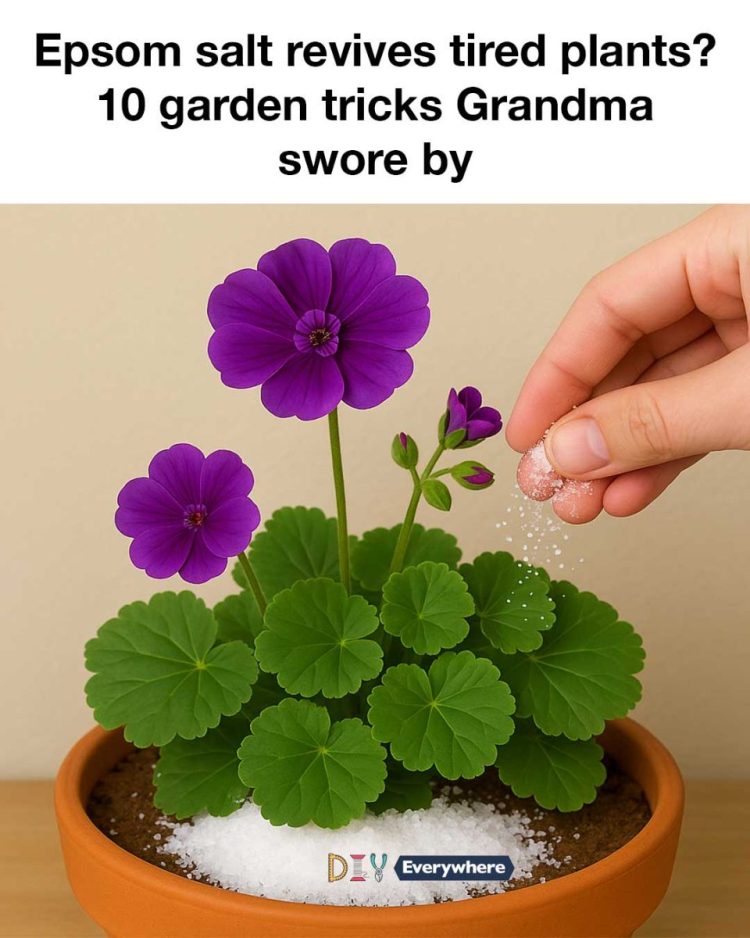Vinegar is a natural weed killer that can help maintain a tidy garden without the use of harsh chemicals. Its acetic acid content makes it effective at killing weeds. To use vinegar as a weed killer, fill a spray bottle with undiluted white vinegar and apply it directly to the leaves of unwanted plants. Be careful to avoid spraying desirable plants, as vinegar can harm them as well.
In addition to weed control, vinegar can be used to acidify the soil for acid-loving plants like blueberries, azaleas, and rhododendrons. Mix 1 cup of vinegar with a gallon of water and use it to water these plants once a month. This helps maintain the acidic soil conditions they thrive in.
6. Baking Soda: Fungus Fighter and pH Balancer
Baking soda is a versatile tool in the garden, known for its ability to combat fungal diseases such as powdery mildew and black spot. To make a fungicidal spray, dissolve 1 tablespoon of baking soda in a gallon of water and add a few drops of dish soap to help the solution adhere to the leaves. Spray this mixture on affected plants once a week until the fungus is under control.
Baking soda can also be used to raise the pH of acidic soil. Sprinkle a small amount on the soil surface and water it in. This is particularly useful for plants that prefer neutral to slightly alkaline soil conditions. However, it’s important to use baking soda sparingly, as excessive use can lead to soil imbalances.
7. Dish Soap: Insect Repellent and Cleaner
Dish soap is an effective and gentle insect repellent that can help keep your plants free from pests. To make an insecticidal soap, mix 1 teaspoon of mild dish soap with a quart of water and spray it on the leaves of affected plants. This solution works by suffocating soft-bodied insects like aphids, spider mites, and whiteflies.
Dish soap can also be used to clean garden tools and containers, removing dirt and grime that can harbor pests and diseases. Simply add a few drops of dish soap to a bucket of water and use it to scrub your tools clean. Rinse them thoroughly afterward to prevent soap residue from affecting your plants.
8. Aspirin: Disease Prevention and Growth Promoter
Aspirin, or acetylsalicylic acid, can boost plant health and resistance to diseases. Dissolve one aspirin tablet in a gallon of water and use it to water your plants every few weeks. This solution can enhance the plant’s immune response, making it more resilient to diseases like blight and mildew.
In addition to disease prevention, aspirin can promote growth by stimulating the production of certain hormones. This can lead to stronger, more vigorous plants with improved flowering and fruiting. However, it’s important to use aspirin sparingly, as excessive use can have adverse effects on plant health.
9. Cinnamon: Natural Antifungal and Pest Deterrent
Cinnamon is a natural antifungal agent that can help prevent damping-off disease in seedlings. To protect young plants, sprinkle a light dusting of cinnamon on the soil surface. This creates a barrier that inhibits fungal growth, reducing the risk of seedling rot.
Cinnamon can also deter ants and other pests from invading your garden. Sprinkle it around the base of plants or on ant trails to keep these unwanted visitors at bay. Its strong scent acts as a natural repellent, making it an effective and eco-friendly pest control solution.
10. Milk: Fertilizer and Fungicide
Milk is not only a source of calcium for humans but also for plants. It can be used as a natural fertilizer and fungicide. To make a milk spray, mix equal parts of milk and water and apply it to the leaves of your plants. This solution can help prevent fungal diseases like powdery mildew and provide a nutrient boost.
Milk can also be used to clean plant leaves, removing dust and grime that can inhibit photosynthesis. Simply wipe the leaves with a cloth dipped in the milk solution. This not only keeps your plants healthy but also enhances their appearance.
11. Newspaper: Mulch and Weed Barrier
Newspaper is an effective and eco-friendly mulch that can help suppress weeds and retain soil moisture. To use newspaper as mulch, lay down a few layers around your plants, overlapping the edges to prevent weeds from growing through. Cover the newspaper with a layer of organic mulch, such as straw or wood chips, to hold it in place and improve its appearance.Newspaper mulch also helps regulate soil temperature, keeping roots cool in the summer and warm in the winter. As it decomposes, it adds organic matter to the soil, improving its structure and fertility. Just be sure to use black-and-white newspaper, as colored inks may contain harmful chemicals.

Epsom salt revives tired plants? 10 garden tricks Grandma swore by
ADVERTISEMENT
For Complete Cooking STEPS Please Head On Over To Next Page Or Open button (>) and don’t forget to SHARE with your Facebook friends
ADVERTISEMENT